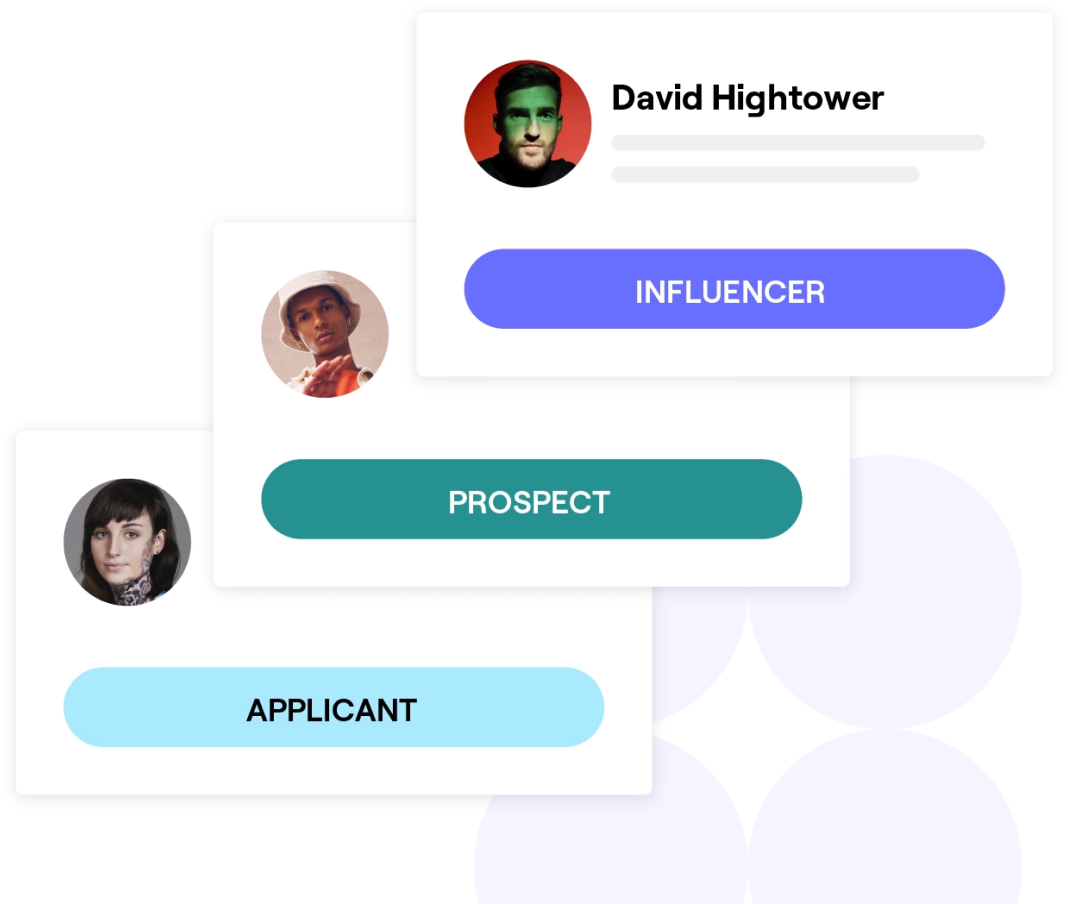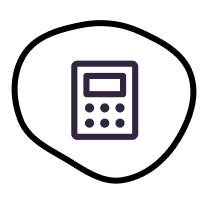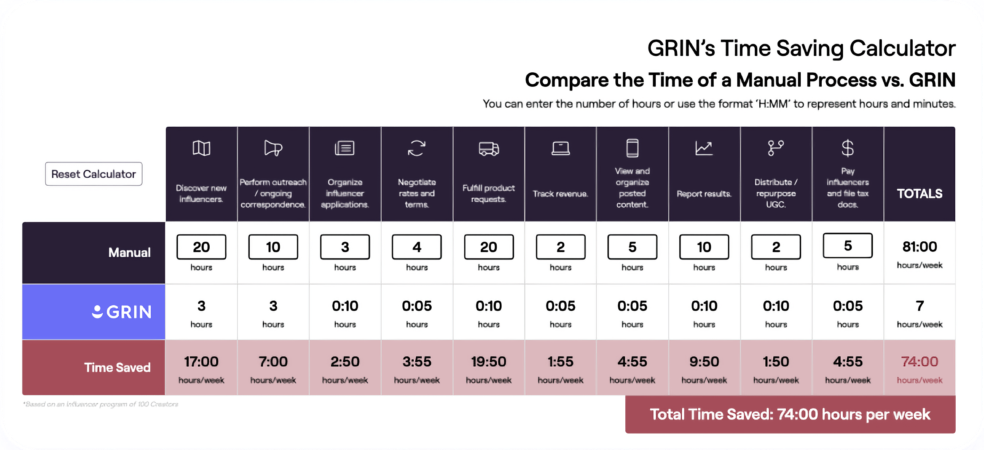Knowing how your customers really feel about your brand is a huge advantage for ecommerce and DTC brands. That’s why marketers are increasingly interested in measuring social media sentiment.
The rise of influencer marketing requires brands to expand their perspective on what success looks like for their creator partnerships and social media strategy. Sentiment analysis often holds the key to lowering acquisition costs and increasing customer loyalty.
What is social media sentiment analysis?
Social media sentiment analysis is an investigative process of understanding how your audience feels about your brand, brand message, and products/services.
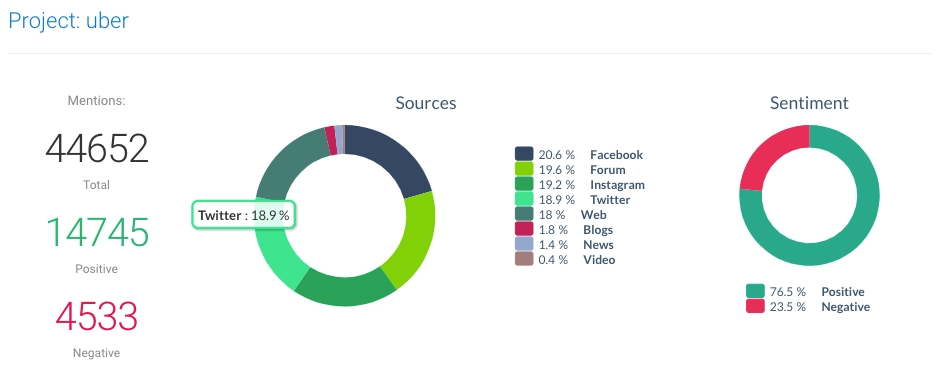
Thanks to engagement features on social media, brands have more tools than ever before to gather candid feedback from customers, prospects, and peers. In the last few years, experts have been able to go deeper on engagement metrics and measure brand sentiment in three different ways:
- Standard sentiment – The standard approach is to find out whether social user sentiment is good, bad, or neutral.
- Sentiment by aspect/feature – This approach to standard sentiment focuses on consumer feedback for specific product features or attributes.
- Fine-grained – If you want to measure positive/negative sentiment in greater detail, the fine-grained approach allows you to use a numbered scale (1-5, 1-10, etc.) or a spectrum (love, like, neutral, dislike, hate).
- Emotion detection – In emotional detection, you can leverage artificial intelligence (AI) to extract specific emotions, such as frustration, excitement, disinterest, joy, etc.
- Intention – Intention helps you identify how your brand impacts a buyer’s willingness to take action. This approach is especially useful for retargeting and building an ideal customer profile (ICP).
How do you track social media sentiment?
Tracking social media sentiment means pouring over audience feedback in the form of comments and any kind of emotion-based responses/reactions. While likes and shares can indicate positive sentiment to a degree, human emotions expressed in their own words provides more insight.
There is no clear right or wrong way to find social media sentiment online. But depending on what you plan to accomplish with that information and the amount of sentiment data available, some approaches will be more effective than others.
What kind of data are you looking for?
You need to know what you are looking for before you begin the search for sentiment data. The best way to identify key sentiment data for your brand is to refer back to your marketing goals and KPIs.
For example, if your main goal is to track brand awareness, most of your sentiment data will focus on your brand’s reach (how much sentiment data exists) and what percentage of that reach extends to those who like and appreciate your brand.
But if you’re most interested in understanding your brand’s ability to convert prospects, you’ll want to use sentiment analysis to measure your audience’s intent to take next steps toward a purchase.
Where can you find sentiment analysis information?
Thanks to a thriving digital age, customer sentiment data is everywhere. Brands that maintain strong online presences through their website, social media accounts, etc. have access to more sentiment information than others.
The most common sources for sentiment analysis data are:
- Social media UGC (tags, hashtags, brand mentions, etc.)
- Social media engagements
- Online reviews
- Customer surveys
- Email/SMS replies
- Recorded sales and customer service calls
What tools do you need to track social media sentiment?
There are many different tools available to help you gather and analyze social sentiment data. Depending on your brand’s size and marketing goals, you will need:
- Customer feedback source (listed above)
- Social listening – A good social listening platform will help you spot brand mentions and user-generated content (UGC).
- Spreadsheet – You will need something to download, store, clean, and sort sentiment data.
- Sentiment analysis platform – These solutions allow you to combine more sentiment analysis tools into a single workspace.
- Influencer marketing platform – If you’re an influencer marketer, managing all your social media partnerships in one place will supply you with some actionable sentiment data uncovered during your campaigns.
The role of natural language processing (NLP) in sentiment analysis
Your sentiment analysis might be more accurate if you pick through each customer comment manually. But it quickly becomes too time-consuming if you have a lot of UGC, brand mentions, and reviews to track.
A growing technology within the world of AI is known as natural language processing, or NLP. In NLP, software can understand text and voice and draw meaningful insights.
All of the top enterprise-level sentiment analysis tools use some form of NLP to automate data collection, cleaning, and reporting.
However, NLP technology – as impressive as it is – is not perfect. Many tools fail to identify sentiment correctly if an individual has poor grammar, communicates ambiguously, or makes sarcastic comments. But overall, NLP allows brands to get a much better understanding of their target audience because of its ability to process thousands of sentiment data points instantly.
How can marketers use social media sentiment analysis to improve campaigns?
Sentiment analysis tells you what your audience likes and dislikes. It can show you the different emotions that people experience when exposed to your brand and products.
If you pay attention to these details, you can uncover your prospects’ hidden needs and put those insights into action to improve your product, campaigns, and customer experience.
When applying sentiment analysis to your campaigns, ask yourself the following questions:
- Does my target audience seem generally happy, unhappy, or disinterested in my brand?
- When do members of my audience feel the most excited?
- What topics, products, or messages do people seem more engaged with?
- How do my most engaged followers express their emotions (many/few words, emojis, simple/sophisticated vocabulary, descriptive, inquisitive, etc.)?
- Do my buyer personas (or ideal customer profiles) fit those people who most often show positive emotions toward my brand?
- Does sentiment data mention any product features?
- Does sentiment data mention anything about the buying experience?
- Does sentiment data mention anything about company employees?
There are countless ways to draw actionable conclusions from your sentiment analysis. Sometimes, one question can lead you down a long trail of new questions and insights. These insights will help you refine your marketing campaigns or make adjustments to the customer experience to increase results.
How can you use social media sentiment analysis in influencer marketing?
When partnering with influencers, you have access to far more UGC and audience feedback than if you had tried to acquire that content on your own.
Members of your audience engage their favorite creators differently than they do when talking directly to your brand. That means that audience comments on influencer content tend to be more candid.
Including sentiment data from your influencer campaigns will dramatically increase the amount and quality of information you have to complete your analysis. This benefit can help your brand scale faster and smarter because you are more in tune with what your audience wants and needs.
Also, influencers who genuinely love your brand will convey positive emotions toward your products and services creating a halo effect.
Free vs. paid social media sentiment analysis tools – Which is better?
The main difference between a free and paid social media sentiment tool is that no free option will properly serve a robust social media or influencer program. But these free tools can be effective for smaller brands and beginner social media teams.
Therefore, you should really only use a free tool to manage small amounts of data. Once you’re managing a higher number of brand mentions, reviews, and engagements, no free tool offers a sustainable solution.
Free sentiment tools can help you become familiar with the analysis process. It can also ease you into shopping for a long-term solution for your brand.
Because the better paid sentiment analysis platforms can be pricey, you’ll want to know which features you need in order to improve your social media and influencer program.
Before you invest in a platform, check to see if any tools in your current tech stack offer what you need.
If you use a social media management/analytics platform, it’s likely that you already have sentiment analysis features available to you. This is also true for some social listening, reputation management, and influencer marketing platforms.
For example, GRIN’s Audience Insights Reports offer a few social sentiment data points for brands who are drilling down on an influencer’s follower base. It also provides basic social listening capabilities that tracks brand mentions and UGC.
Top 3 free social media analysis tools
1. MonkeyLearn Sentiment Analyzer

MonkeyLearn’s free sentiment analyzer gives users a taste of what an AI-powered tool can do. The vendor ultimately hopes that you’ll invest in their software solutions, but the free tool works well for marketers managing low volumes of sentiment data.
Pros
- Easy-to-use search tool
- Strong NLP integration to track to what degree a topic, brand, or comment is positive, neutral, or negative
Cons
- Limited results
2. Social Searcher
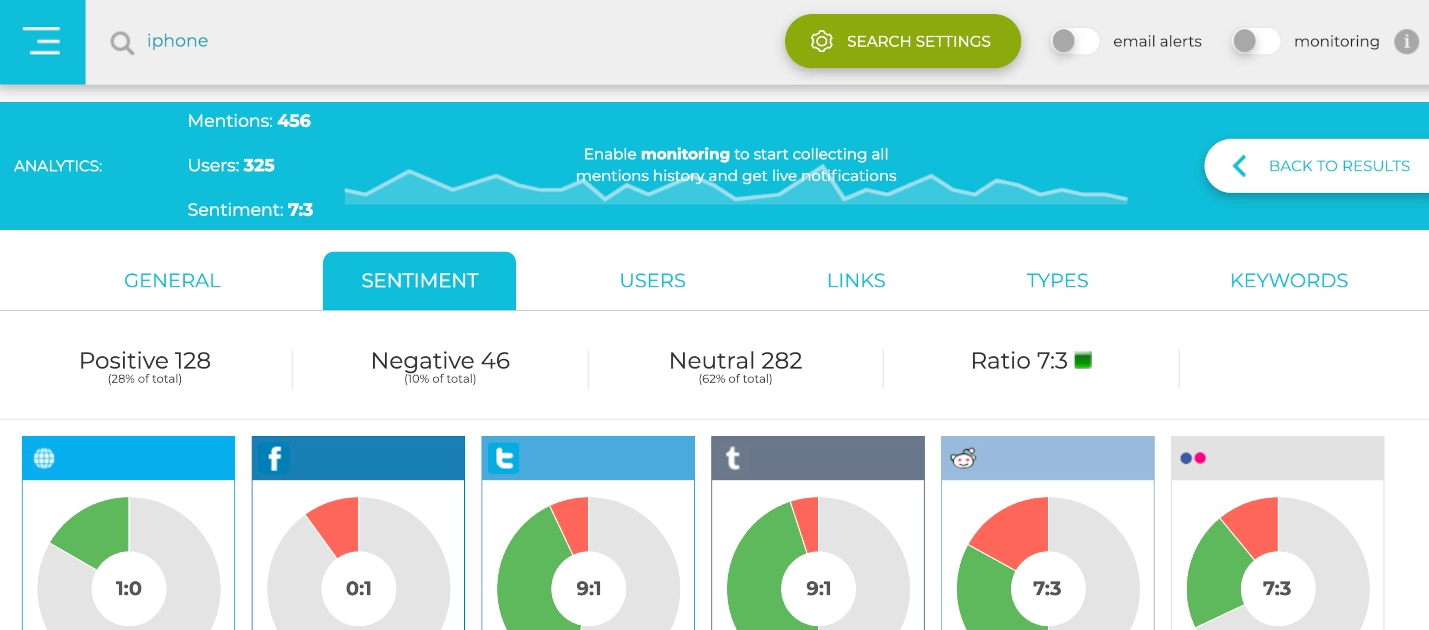
Social Searcher is a wonderful social listening tool that tracks topics and brand mentions across all leading social media platforms, as well as indexed sites. For being a free tool, it is one of the best.
Pros
- Most extensive keyword search capabilities
- Multiple, user-friendly data visualizations
- Gathers sentiment from all leading social channels and indexed sites
Cons
- Limited to 100 free searches/keywords
3. NC State’s Twitter Sentiment Visualizer
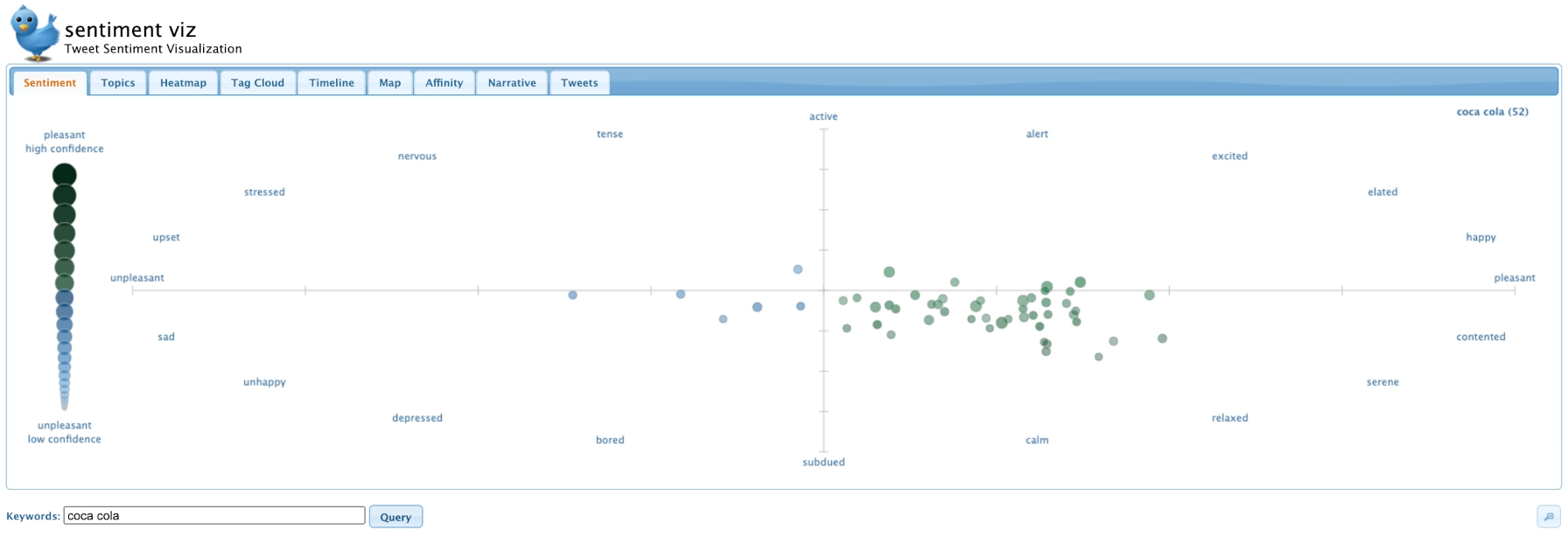
If you don’t mind a rugged interface, NC State has a great sentiment tool for brands that use Twitter extensively. There are no search/keyword limits, and you get a wide array of analytics and data visualizations.
Pros
- Surprisingly robust for a free platform
- Sentiment measuring across 8 different views
Cons
- Twitter only
Top 3 paid social media analysis tools
1. Brandwatch
Brandwatch is what is known as a full “consumer intelligence suite.” It will perform social monitoring and analytics tasks, as well as automate your sentiment analysis process.
Pros
- Can identify nuanced emotions (anger, fear, surprise, etc.)
- Combines robust social listening and sentiment analysis
- Audience segmentation
Cons
- Requires steep learning curve for new users
2. Reputation
Reputation has a wide range of reputation management tools, including social listening and sentiment analysis. Brands can leverage the tool to streamline their customer surveys and online business listings.
Pros
- Focused on helping brands with all public relations and branding efforts
- Features that increase the amount of inbound customer feedback
- Proprietary algorithms for analyzing a brand’s public persona
- Strong text analytics
Cons
- Users report persistent “lags” in software
- One of the more expensive solutions
3. Talkwalker
Talkwalker is another social listening platform with enterprise-level analytics and sentiment analysis tools. This platform excels for brands with a strong social media and content marketing strategy.
Pros
- One of the few platforms with the ability to identify sarcastic comments
- Offers sentiment by product feature
- Robust analytics
- Strong reporting tools
Cons
- Requires steep learning curve for new users
- Is less intuitive when trying to weed out irrelevant brand mentions (i.e., “grin with your mouth” versus “GRIN is the best influencer marketing software”)
Conclusion: Social media sentiment analysis will improve your influencer marketing campaigns by offering more actionable insights.
Nuance is everything in marketing. The more you know about your audience’s wants, needs, aspirations, and problems, the easier it is to attract them to your brand and keep them coming back.
Social media sentiment analysis can also enhance your influencer marketing campaigns. These insights unlock answers to key questions on why certain campaigns perform far better than others.
Spend less time jumping from platform to platform and more time increasing results. Do it all in one place with GRIN.
Find out how much time you can save with an influencer marketing software: GRIN’s Time Saving Calculator








